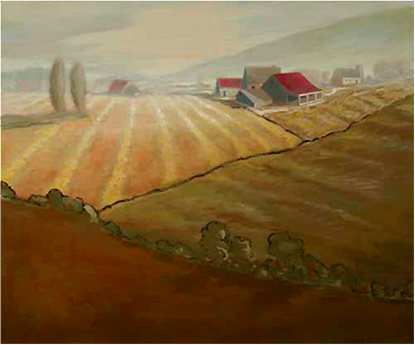After studying at the Art Students League, the Pan American Art School in New York City, and with private instructors, something happened that forced a change. I meet the most talented painter I ever new, Gilbert Stone. He was a professor at the School of Visual Arts and we became good friends. We painted together, talked a lot and helped each other. I have two very special gifts to thank Gil. The first was that he showed me the complex tinting techniques he used on most of his paintings. The second was that he was the only person to tell me I was a great painter, and that I would understand that as soon as I began painting the way I really wanted to paint. “Just forget everything you learned and start all over again.” And I did. I knew Gil was a great painter and after he told me that, I began to believe I was too.
So in 1978 I started with a new intensity, a wonderful feeling about painting and not caring about the comments of others. I remember a lovely lady was looking straight into one of a few large canvases I had at a show. What she said was really nice. I walked away to give her space and her husband came up to her not knowing I was the painter. She said I think we should buy something at this show. He looked at my painting and said okay, but not this shit. Anything but this. It was the first time I didn’t feel anything. I knew with confidence that what I was doing was right. It was a great feeling.
Because of the way I work, layering colors and tinting, sometimes 4, 5 or 6 layers of painting and tinting, I need to visualize the process from the first layer out to the last. It often feels like you are looking at a movie running backwards. Preparing the canvas with gesso is the first step. Normally the painting will require base colors, which may almost not be visible looking at the finished work. The tinting can be done overall or in specific areas of the painting. Again painting, dripping or splash work. Sometimes paper towels wet with paint are dabbed on for effect. I may continue this process for 4, 5, sometimes 6 layers of work.
Look closely at the paintings and you will be able to detect some of the layering effort beneath the surface of the painting. When creating a new painting I try to stay as loose and creative as possible open for change. Even in the middle of the process I may find a better way or if I feel something will make a better result, I go with it. Invariably accidents happen and the artist must make the decision to go with it, or not. I believe the creative process is filled with influence from areas all around us. An open mind is essential.
